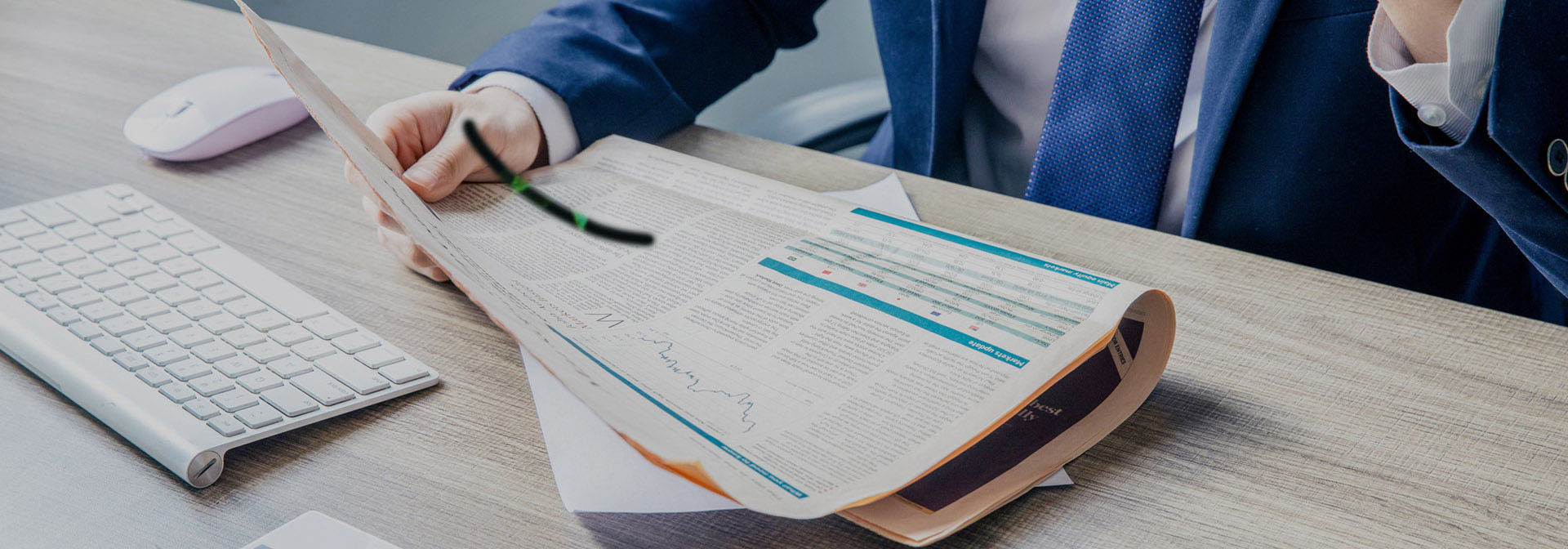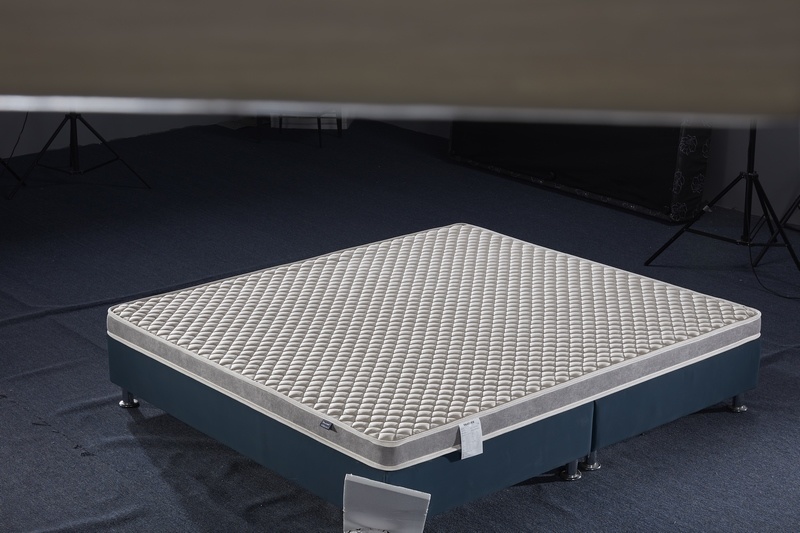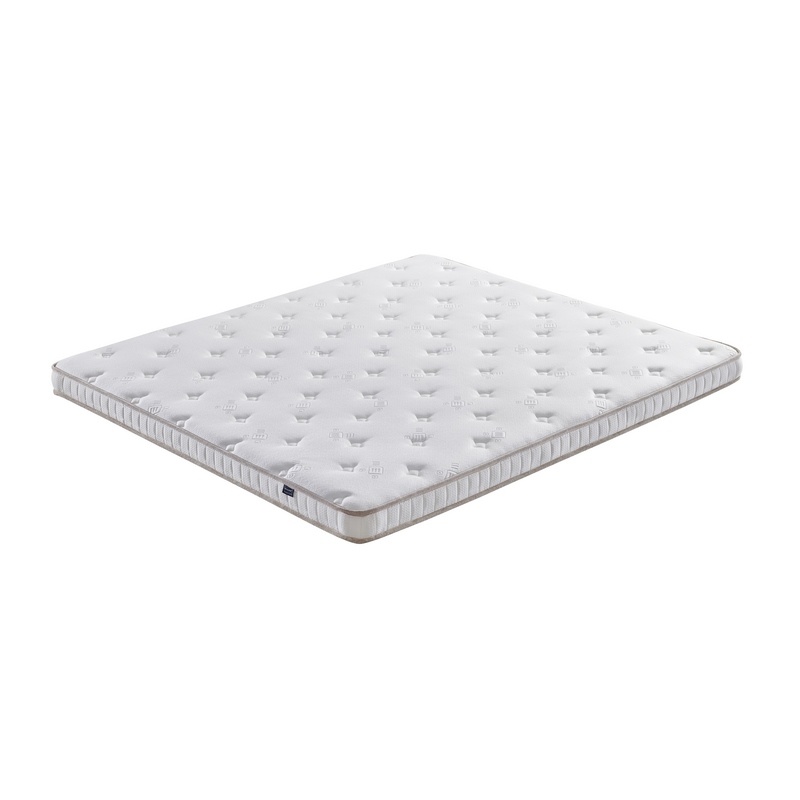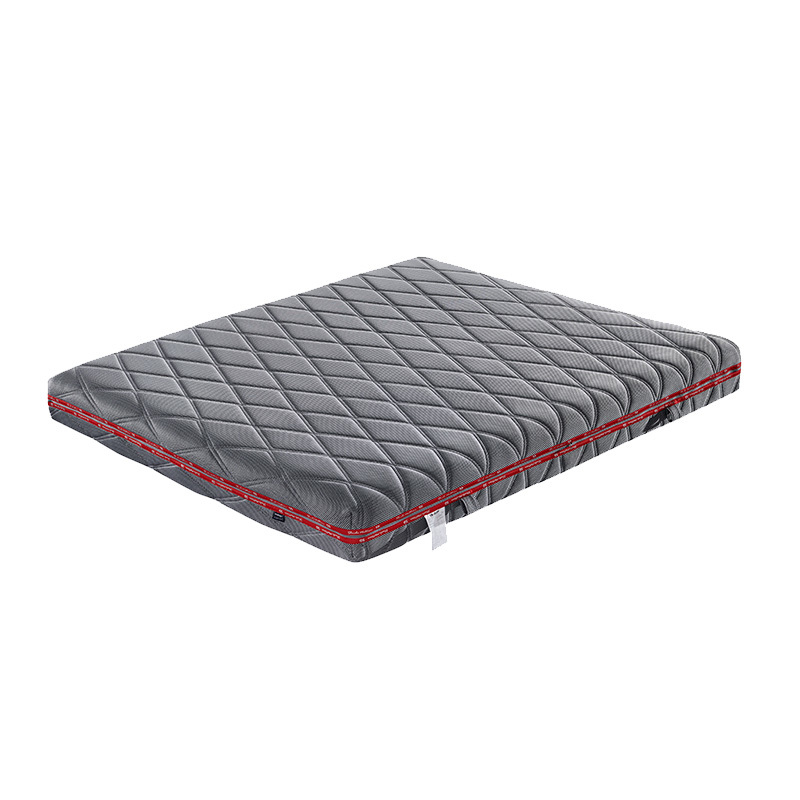Let a set of data tell you that the waist actually likes this firmness of mattress
Waking up, straightening up after getting out of bed, after prolonged work, the moment you lift something
Release Time
2025-04-16
Waking up, straightening up after getting out of bed, after prolonged work, the moment you lift something... back pain always comes suddenly and unexpectedly.
People with bad backs have probably heard this saying: "Sleep on a hard board bed." Some people remove the mattress altogether, placing a thin blanket on the bed board, believing this will alleviate the pain.
Sleeping on a hard board bed ≠ Sleeping on a bed board
Overall, a hard board bed better adapts to the human body curve, reducing spinal distortion and relieving back pain, stiffness, and other discomfort.
But sleeping on a hard board bed does not equal sleeping on a bed board; several cushions should still be placed on the hard board.
If the bed is too hard, the most noticeable feeling when lying down is discomfort, with increased pressure on the support points of the head, back, and buttocks, preventing the body from getting the necessary relaxation during sleep.
What's more, when sleeping on a hard board bed, the waist hangs in the air, the lumbar spine is not well supported, which can also cause or worsen lower back pain. Over time, this may alter the lumbar curve, leading to problems such as lumbar muscle strain.
People with bad backs are suitable for sleeping on a hard bed, but the mattress cannot be so hard that it does not deform, nor can it deform too much. To grasp the hardness of the mattress on the bed board, remember the 3:1 principle.
For example, a 3cm thick mattress should sink by 1cm when pressed; a 10cm thick mattress should sink by about 3cm.
Patients in the acute phase of lumbar disc herniation should at least have a 3cm thick blanket underneath.
If you have back problems, don't sleep on a bed that's too soft.
A normal spine has three physiological curves; a bed that is too soft lacks sufficient support and cannot maintain the normal physiological curvature of the spine.
When the body is "nested" in an overly soft bed, the middle section of the spine will sag, the torso forming an arc, and the ligaments and intervertebral discs around the spine will bear excessive loads, easily leading to lower back pain over time.
People with lumbar disc herniation, spinal curvature, the elderly, and children and adolescents whose spines are still developing are not suitable for sleeping on overly soft beds.
In addition, sleeping on a soft bed for a long time may also damage the pelvis.
Due to the body sinking, the pelvis will encounter resistance in all directions, requiring extra effort to turn over and sit up. For pregnant women and others with poor pelvic stability and loose muscles and ligaments, excessive force can easily cause acute and chronic pelvic injury.
How to choose the right firmness?
Mattress too soft: It cannot provide good support for the spine, and people lying on it will "sink in." Regardless of the sleeping position, one side of the spine will be excessively curved, and some muscles will be easily strained due to prolonged pulling, causing lower back muscle strain, lower back pain, and even poor spinal curvature.
Mattress too hard: It cannot effectively support the various curves of the body, but instead excessively supports the protruding parts such as the back, sacrum, and shoulders, which can also cause muscle strain and poor spinal curvature.
In comparison, a medium-firm mattress can provide effective support for the various curves of the body, making it a better choice.
As we all know, when we lie flat, our bodies have several physiological curves; when lying on our sides, there are also curves between the head, neck, chest, and waist. Moreover, the position and curvature of the curves are different when lying flat and lying on the side.
Therefore, our mattress must meet the following requirements: no matter whether we lie flat, lie on our side, or lie on our stomach, the mattress can self-shape, maintaining a certain level of support while conforming well to the various protruding parts and concave curves of the body.
For the first year of purchasing and using a new mattress, turn it over, left and right, or head to foot every 2-3 months to ensure even spring pressure. After that, turn it over about every six months.
Regularly clean the mattress with a vacuum cleaner, but do not wash it directly with water or detergent.
Do not sit on the edge of the bed frequently, as the four corners of the mattress are the most vulnerable. Long-term sitting and lying down can easily damage the edge springs. If the springs are locally dented, or if you feel uneven pressure when lying down, they should be replaced in time.
6 details for people with back pain
In addition to choosing a comfortable mattress, people with back problems also need to pay attention to the following life details.
1. Use a cushion when sitting
When sitting, keep your head up, chest out, and back straight to reduce spinal pressure. Office workers should ideally place a cushion in their lower back to support it.
2. Don't let the suitcase handle be too long
When pulling a suitcase, keep your arms close to your body as much as possible. The handle height should be appropriate, so that when your arms are vertical, you can just grasp the handle; start smoothly to avoid injuring your back muscles.
3. Use a small pillow when sleeping
When sleeping, you can place a firm, flat small pillow under your hips and abdomen to relieve pressure on your lower back.
Avoid prolonged sitting; try to stand up and move around for 5 minutes every 30 minutes.
4. Squat down when picking things up
When picking things up, it is best to lower your center of gravity by squatting and keeping your back straight to reduce pressure on your lower back and make it safer and easier.
5. Keep heavy objects close to your chest when carrying them
If you need to carry heavy objects, it is recommended to keep the object close to your chest after lifting it, as it is easier and less likely to fall.
6. Practice yoga
Regularly doing swimming, yoga, and slow walking is beneficial to lower back health. The elderly should avoid strenuous exercise.
Leave us a message
Please fill in the information accurately to ensure smooth communication. We will contact you as soon as possible.






